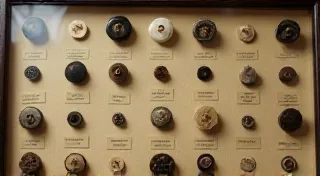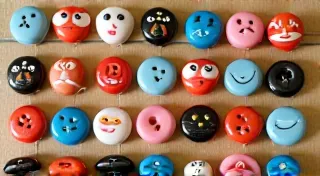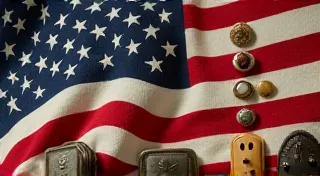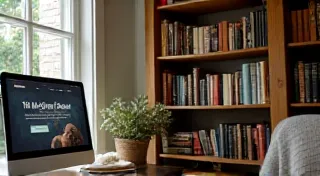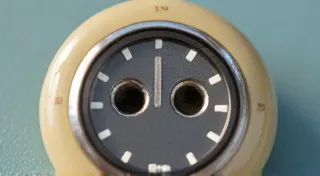Art Deco Buttons: Styles and Significance
The Art Deco period, spanning roughly the 1920s and 1930s, represents a distinct and glamorous era in design. This aesthetic influence extended to all aspects of life, including fashion and accessories – and, of course, buttons. Art Deco buttons are highly sought-after by collectors, not only for their beauty but also for the historical insights they offer into the period's style and manufacturing techniques. Understanding their characteristics and significance can greatly enhance your button collecting journey.
The Defining Characteristics of Art Deco Buttons
Art Deco buttons are instantly recognizable due to their emphasis on geometric shapes, stylized natural motifs, and a sense of luxury. Here’s a breakdown of common traits:
- Geometric Shapes: Circles, squares, triangles, and stepped patterns (zigzags) were hugely popular. These shapes were often combined to create intricate designs.
- Stylized Natural Motifs: While representational, Art Deco buttons often depicted flowers, leaves, animals, and human figures in a simplified and elongated manner. Think of a graceful, almost abstract swan or a streamlined depiction of a poppy.
- Materials: Glass, bakelite, horn, metal (often silver or gold plated), and celluloid were commonly used. The use of these materials was often combined to create a luxurious feel.
- Color Palettes: While vibrant colors existed, Art Deco buttons frequently feature a palette of blacks, creams, golds, silvers, deep reds, emerald greens, and sapphire blues. These colors contributed to the overall sense of sophistication.
- Raised Designs & Embellishments: Many Art Deco buttons feature raised designs achieved through layering or molding. Enameling, rhinestones, and filigree were frequently used to add sparkle and detail.
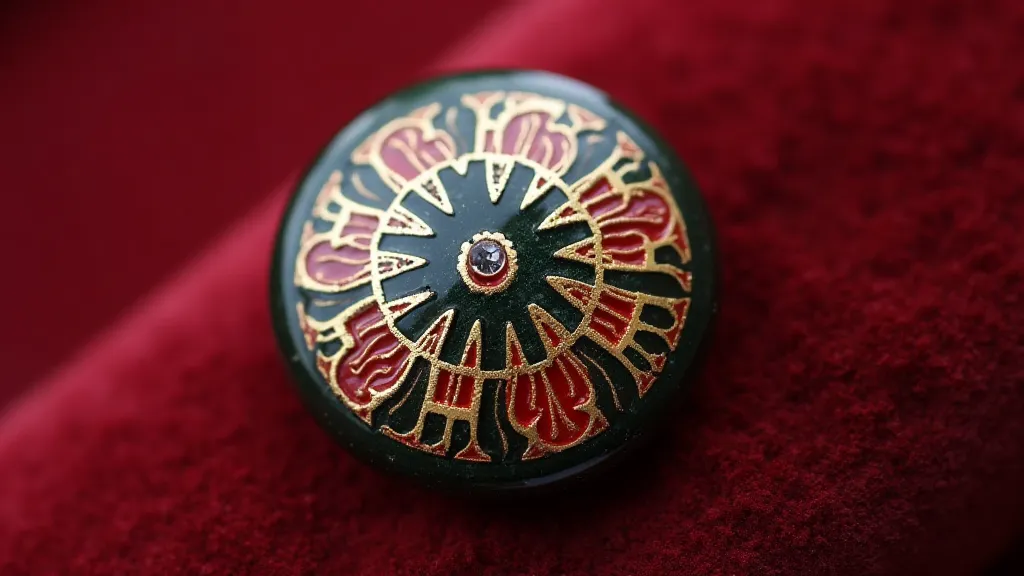
Common Styles of Art Deco Buttons
Within the broader Art Deco movement, certain button styles became particularly prevalent:
- Geometric Abstractions: These buttons prioritize form and shape over realistic representation. Think stepped patterns, overlapping circles, and zigzags.
- Egyptian Revival: Inspired by the discovery of Tutankhamun’s tomb in 1922, these buttons feature hieroglyphics, scarabs, and other Egyptian motifs.
- Sunburst Designs: These radiate outward from a central point, creating a dynamic and energetic feel.
- Streamline Moderne: Reflecting the era's fascination with speed and efficiency, these buttons feature long, slender shapes and aerodynamic curves.
- Portrait Buttons: Though less common, some Art Deco buttons feature portraits of fashionable women or famous figures, often rendered in a stylized manner.
Valuing Your Art Deco Buttons
Determining the value of Art Deco buttons involves several factors. Rarity, condition, materials used, and design complexity all play a role. Buttons made from precious metals or featuring intricate hand-painted details generally command higher prices.
- Condition: As with any antique, condition is paramount. Chips, cracks, scratches, and missing shanks will detract from value.
- Material: Bakelite and horn buttons are generally less valuable than those made from silver or gold.
- Rarity: Unique or unusual designs are more valuable than common ones.
- Design and Maker Marks: Buttons with maker's marks (though often difficult to identify) can be valuable, especially if the maker is known for high-quality craftsmanship.
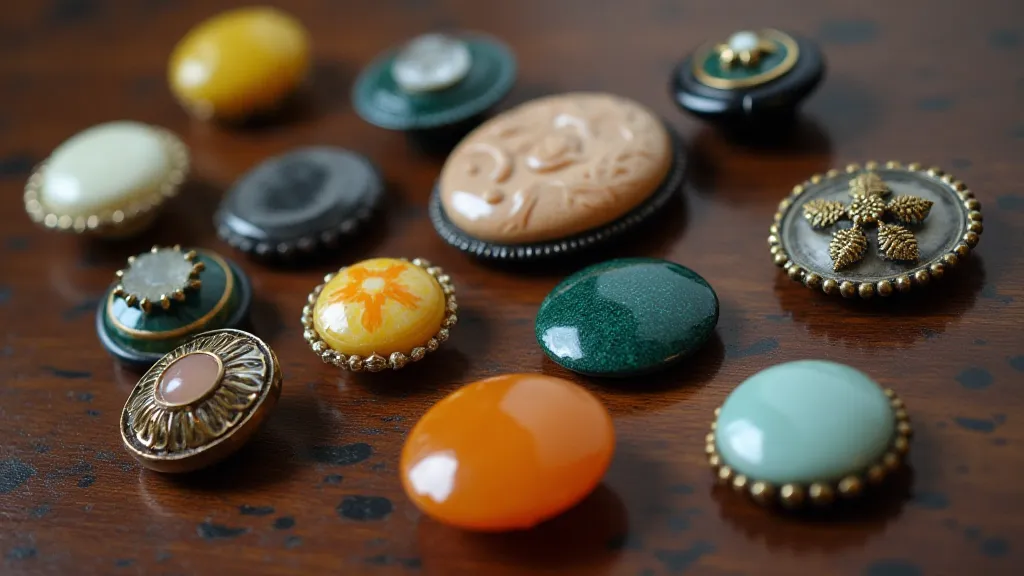
Collecting Tips for Art Deco Buttons
Here are a few tips to help you build a successful Art Deco button collection:
- Research: Familiarize yourself with the styles, materials, and makers of Art Deco buttons.
- Attend Button Shows: Button shows offer a great opportunity to examine a wide variety of buttons and connect with other collectors.
- Online Marketplaces: Online auction sites and specialized button marketplaces can be a source of unique finds, but be sure to do your research and examine photos carefully.
- Be Patient: Building a valuable collection takes time and persistence. Don't be afraid to start small and focus on areas that interest you.
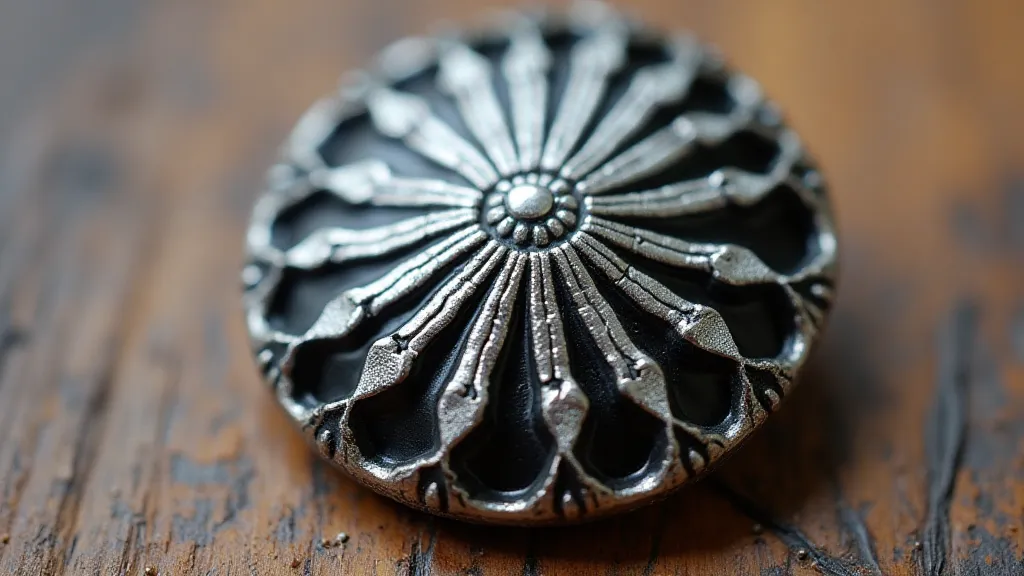
Conclusion
Art Deco buttons are more than just fasteners; they are miniature works of art that offer a glimpse into a glamorous and transformative era. By understanding their defining characteristics and following these collecting tips, you can greatly enhance your appreciation for these beautiful and historic treasures.
